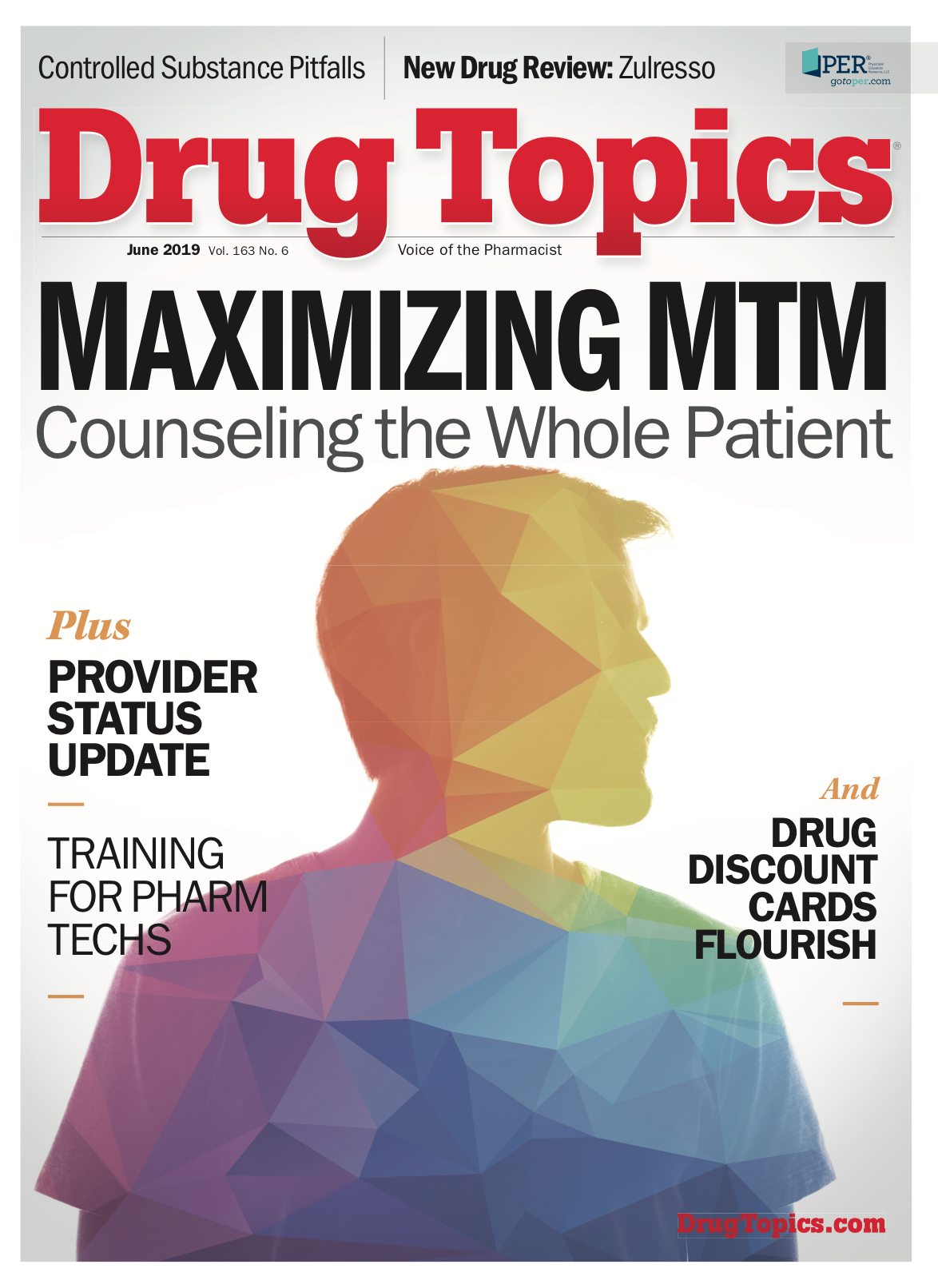How to Keep Your Professional Development Current
Staying abreast of the pharmacy profession can be easier, with the right tools.

Staying current in the pharmacy profession can be daunting, especially since the amount of information pharmacists are expected to know continuously increases. There were a record breaking 59 new drug approvals in 2018, which is the highest in the past 10 years.
The “Oath of a Pharmacist” that is recited at pharmacy school graduations states: “I will accept the lifelong obligation to improve my professional knowledge and competence.” Staying abreast of professional information in the pharmacy world can include a variety of techniques such as attending continuing pharmacy education (CPE or CE) programs, reviewing drug information updates, and networking. When I taught at Nova Southeastern University College of Pharmacy, I always told my students that it is impossible to memorize everything, but it is important to know how to find the information when you are asked a drug information question.
Continuing Education
Part of the license renewal process requires pharmacists to complete CE for the states where they are licensed. These can include online and live programs. It’s important to check with the state board of pharmacy website what the CE requirements are to ensure that you are ready for renewal. Pharmacists can check with their practice sites and with local state pharmacy associations to see what programs are offered.
The National Association of Boards of Pharmacy (NABP) provides links to each state board of pharmacy website, which helps pharmacists stay current with their state laws and regulations. Also, NABP created CPE Monitor, which is an electronic system that maintains CE information for all the states.
If you are considering transferring your license to another state, the NABP website should be your starting point for the latest information.
National organizations such as ASHP have free CE programs for members. Check out your alma mater, as many pharmacy schools also offer CE programs for their graduates.
If possible, push yourself to go beyond the required credits to stay current. I’ve found that presenting at CE programs helps to enhance my knowledge about pharmacy topics. If you are feeling adventurous, send your curriculum vitae with topics of interest to CE programs and get involved with educating your colleagues.
Trending: Atrial Fibrillation Patients Often Overestimate Stroke and Bleeding Risks
Certificate Programs
Pharmacists who are interested in expanding their professional horizons should look at the certificate programs available through the ASHP and APhA. Medication therapy management (MTM) is a popular program offered through APhA that teaches pharmacists how to develop and deliver MTM services in their practice setting. Other APhA certificate programs include cardiovascular disease management, immunizations, and diabetes care. ASHP offers a variety of certificate programs include pharmacogenomics, pain management, medication safety, and teaching.
There is a Sterile Product Preparation Certificate Program that was launched by ASHP to train pharmacists in all aspects of sterile compounding.
Certificate programs provide CE credits and are a great way for pharmacists to enhance their knowledge base. Be sure to add these certificate programs to your CV when you are applying for jobs.
Continue reading on page 2...Drug Information Updates
PubMed is a free resource for accessing clinical studies from journals. Some articles are available as full text, and if your pharmacy practice site subscribes to an electronic library, then most articles can generally be accessed for free. Guidelines are also available through PubMed. It is especially important to stay current on the new recommendations for pharmacy practice for disease states including diabetes, HIV, hypertension, and hyperlipidemia.
Establishing a monthly journal club where pharmacists and students sit and discuss recent clinical studies can help everyone stay up-to-date.
Some journals, like the New England Journal of Medicine, allow individuals to register for free email alerts of published clinical studies and allow access to three full-text articles per month. This is a great way to review clinical studies relevant to your practice setting from a highly reputable peer-reviewed journal.
Be a Preceptor
Serving as a preceptor-teaching the next generation of pharmacists-is also a great way to stay current. When I was pharmacy preceptor, I found that I learned so much valuable information from my students, especially from their questions. Giving drug information questions to students on topics that you are interested in learning more about can help you and your colleagues stay up-to-date. Students also benefit from this exercise by using reputable resources to formulate the best response to these drug information questions. If you are a preceptor, check with the pharmacy school because you may also have free access to electronic drug information resources.
Read More: Are There Too Many Pharmacists?
Free Websites
There are a variety of free websites that offer great drug information and legal and regulatory updates for pharmacists You can sign up for email alerts from many of them. The FDA website offers the most current information on drug approvals, recalls, and important safety alerts.
For updates on vaccines and public health information, the CDC is your go-to resource. The CDC also has a free app for your smartphone with charts for adult and childhood immunizations.
DailyMed, a website of the National Library of Medicine, is a nice one-stop-shop for medication prescribing information created by the National Library of Medicine. It also allows you to report adverse drug reactions, search for clinical studies, and identify pills.
The DEA website contains the Controlled Substances Act which includes federal laws that pharmacists should know as part of the profession. The website, which include important elements of controlled substance prescriptions.
Social Media
Social media is a great tool for pharmacists to stay current while managing their busy careers. Twitter, Facebook, and LinkedIn are all free, and it is easy to set up professional profiles. These tools can also be accessed through apps on your smartphone for staying up-to-date from anywhere. Pharmacists can follow professional organizations and drug information resources for the latest information on health news, drug approvals, clinical studies, and pharmacy law updates. Pharmacists can learn from the members’ posts which include medication questions, vaccine information, and career opportunities.
Pharmacists can also educate the public through social media, such as the importance of vaccinations to prevent measles outbreaks. One of my favorite Facebook groups is the Pharmacist Moms Group, which provides support for women pharmacists.
Networking at Conferences
Networking at pharmacy conferences is a great way to expand professional pharmacy opportunities. Consider presenting a pharmacy poster at an ASHP or APhA national conference. You will often have great discussions about your poster with colleagues and learn about groundbreaking research. Be sure to bring business cards with you along with your poster abstract to distribute at the conferences.
